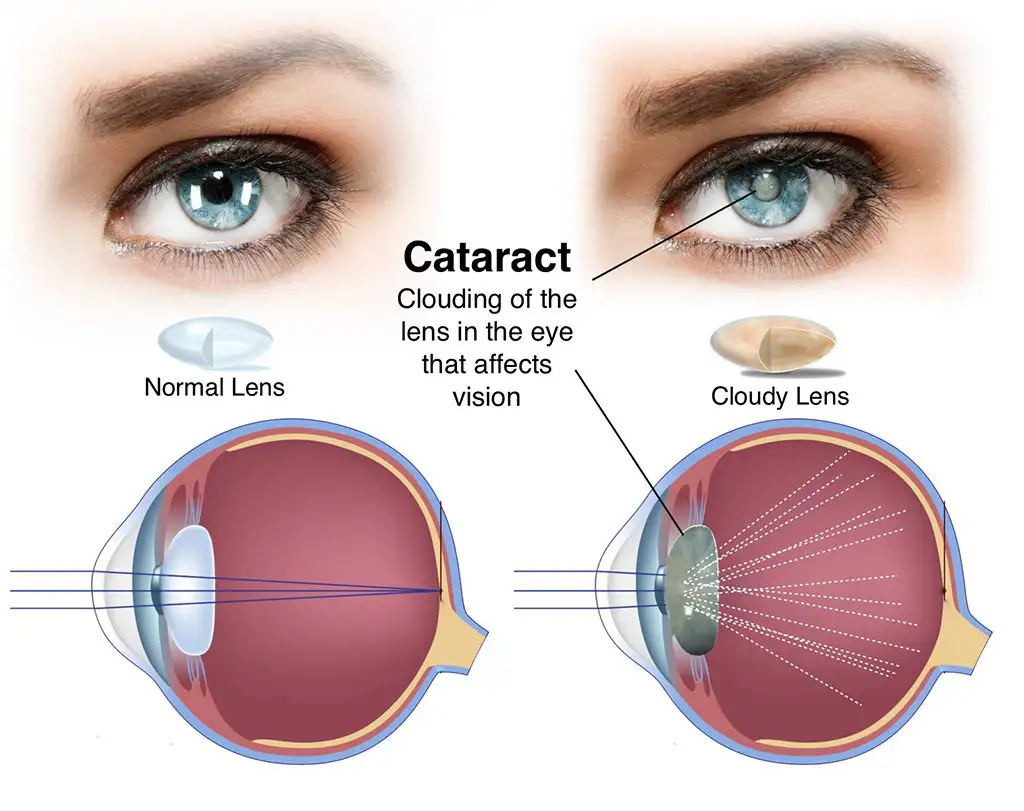At Meae Care, we know that healthy vision plays a huge role in how we move through the world—whether it’s recognizing a familiar face, driving at night, or simply enjoying a good book. And while eye health is important at every age, it becomes even more essential as we grow older.
In honor of National Cataract Awareness Month, we’re taking a closer look at cataracts: what they are, how they develop, what they feel like, and the steps you can take to protect your vision and maintain your independence.
Understanding Cataracts: The Clouding of Clarity

Inside each eye is a clear, flexible lens that focuses light onto the retina, helping us see sharply. When we’re young, this lens is fully transparent. But over time, it can become cloudy—a condition known as a cataract.
In the beginning, cataracts may affect only a small part of the lens with little impact on vision. But as they progress, more of the lens becomes clouded, making it harder for light to pass through clearly. Vision becomes gradually blurrier, dimmer, and more distorted.
Cataracts form as proteins in the lens break down and clump together. While aging is the most common cause, other factors—like diabetes, smoking, sun exposure, certain medications, or family history—can also play a role.
How Cataracts Affect Vision
In the early stages, cataracts may cause little to no noticeable symptoms. The cloudiness often starts in a small area of the lens, and vision might seem mostly unchanged. But as cataracts grow, they begin to interfere with how light passes through the lens.
People often describe it as looking through a foggy or frosted window—shapes are still visible, but clarity fades. Colors may appear muted, light may seem too bright or glaring, and tasks like reading or night driving become more difficult.
You might also find yourself needing frequent updates to your glasses or contact lens prescription. Some people experience double vision in one eye. These changes often happen gradually, which is why regular eye exams are so important for early detection.
Cataracts vs. Diabetic Retinopathy
While cataracts are a common cause of age-related vision loss, they’re not the only concern—especially for those with diabetes. Cataracts cloud the eye’s natural lens, while diabetic retinopathy damages the retina due to prolonged high blood sugar.
These conditions can occur together but require different treatments. Diabetic retinopathy often progresses without symptoms until vision is affected, making regular eye exams essential.
Both conditions can coexist, especially in people with diabetes, but they require very different treatments. Your doctor can help identify the cause of vision changes and guide you toward the right care.
Who’s at Risk—and When?
Cataracts usually develop gradually and are most often diagnosed after age 60, though they can begin forming in your 40s or 50s. By their 70s, most people will experience some degree of cataract.
National stats show:
- About 25% of adults ages 65–69 have cataracts
- Over 50% by age 75
- Nearly 70% by age 80
The average age for cataract surgery in the U.S. is around 67, but this varies by region and individual need.
Certain risk factors—like diabetes, past eye surgery, long-term steroid use, or high sun exposure—can cause cataracts to develop earlier. That’s why regular eye exams become even more important as we age.
What You Can Do

If you notice changes in your vision, don’t brush them off. Cataracts often progress slowly, and catching them early gives you more time and options. Your eye doctor will likely recommend a few simple, non-invasive tests to diagnose cataracts, including:
- A visual acuity test to measure how well you see at various distances
- A slit-lamp exam to check the structures at the front of your eye
- A dilated retinal exam to examine the retina and lens more closely
- A tonometry test to measure fluid pressure in the eye
Early cataracts might not require treatment right away. New glasses, magnifying lenses, brighter lighting, and anti-glare sunglasses may help improve your vision temporarily. However, once vision loss begins to interfere with your daily life—like reading, driving, or recognizing faces—your doctor may recommend cataract surgery.
Understanding Cataract Surgery
Cataract surgery is a safe, common outpatient procedure that replaces the clouded natural lens with a clear artificial one, called an intraocular lens (IOL).
Your eye is numbed, and you stay awake but comfortable. The surgery is quick—usually under an hour—and you can go home the same day with simple aftercare instructions.
Mild soreness or light sensitivity afterward is normal. If both eyes need surgery, the second is usually done after the first has healed. Complications are rare, but your doctor will explain any risks and help you decide when surgery is right for you.
The Meae Care Perspective
At Meae Care, we believe clear vision is key to living well. Cataracts may be a natural part of aging, but that doesn’t mean you should ignore them. With regular eye exams and early care, you can protect your sight and stay independent longer.
We also look at the bigger picture. Conditions like diabetes, high blood pressure, and obesity can speed up cataract development. That’s why we encourage annual wellness visits and offer in-home care that supports your whole health—not just your eyes.
Whether you’re just noticing changes or planning ahead, you’re not alone. We’re here to help you stay informed, confident, and in control of your health—every step of the way.
Clear vision is possible. Let’s take care of it together.


